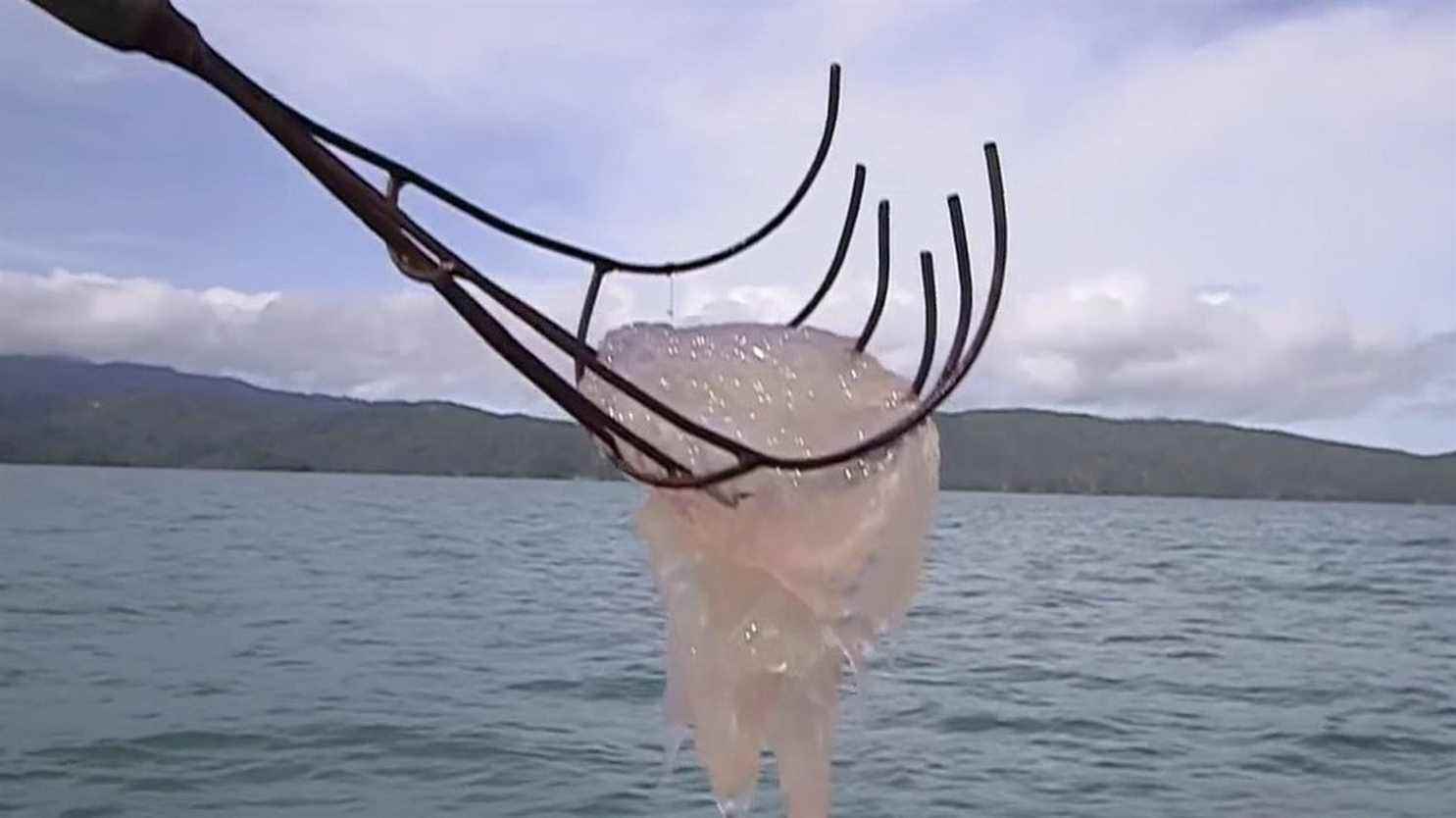Published
Article written by

Jellyfish, which proliferate in all seas and oceans, could be the big winners of climate change. In Thailand, they now bring in more than fish, and a real industry is taking shape.
The future of the fishing industry may be playing out in Satun, Thailand right now. Like every morning, Sompong Tid Eur and Manop Tae Aree take to the sea. Their specialty? Jellyfish, intended to replace fish on our plates. “They are on the surface. We just have to fish them”, explains Sompong Tid Eur, who specifies that only “some varieties are edible”. They are sometimes hundreds in the water. In these seas almost emptied of their fish, it is now the only species that can still support the inhabitants. “There are no more squids, no more shrimps, no more crustaceans”, confirms Manop Tae Aree, who earns between 25 and 35 euros a day thanks to jellyfish.
Jellyfish is becoming a real industry in Thailand. After the tentacles are cut off, the rest of the animal is sliced. Rich in carbohydrates and protein, jellyfish are also known for their collagen content, which is good for blood pressure. Asian markets are seduced. “Our main markets are Japan, South Korea, China and also the United States, but only Asian American communities”, says Pisit Suwanchai, general manager of Manachai Food and Trading. Nearly 3 tons of jellyfish leave the factory every day, for an annual turnover of several million euros. Sales have doubled in ten years. In major Asian cities, such as Bangkok, they are cooked in quite a variety of forms.
